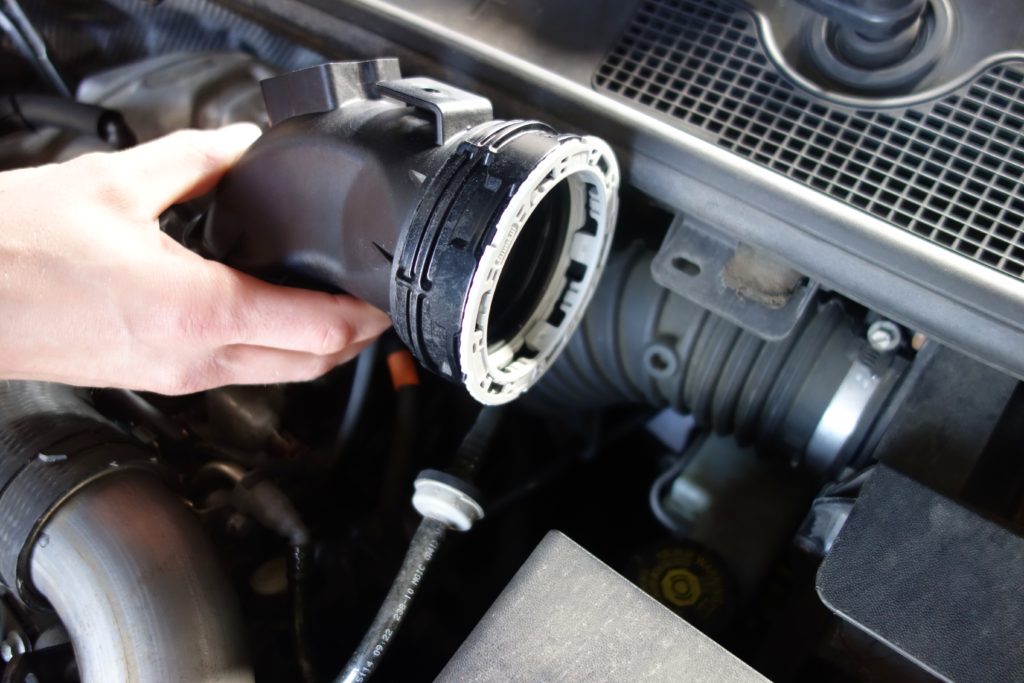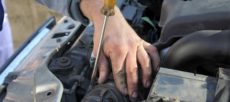This post is also available in: Deutsch
Air brings performance. The colder the air, the more power there is. For this to work, you need heat, cold, the basic rules of physics and the answer to the question of how the perfect engine is built. But first things first.
What happens when a driver steps on the gas pedal? It may not seem like much. But at the same moment a small metal plate inside the car moves: the throttle valve. It is located in the intake manifold and allows for air to flow into the engine from the outside, is mixed with gasoline, and then enters the combustion chambers of the engine. This is what gives the engine that extra kick.

“This is how the air intake in the turbo motor works,” says René Schindler. “The lower the temperature of the air, the smaller its volume,” adds the product engineer for EJT (Engineered Joining Technologies) for the Europe, Middle East and Africa region.
After all, warm air expands – even in the engine. The cold air supply lowers the temperature and thus the volume, meaning there is less expansion. This results in a larger mass of air in the engine. More fuel can be burned then. This gives the engine more torque on the road.
Plug in, snap into place – the Twist Quick Connector
But how is air cooled down as much as possible? Inside a charge air cooler that cools the hot air down even more. And how does more air get into the engine? Through the compressor wheel, a mini turbine located directly inside the turbocharger.
“The trend is clearly going away from the classic air intake to the charge air system in turbo motors,” says René Schindler. Most current models are equipped with coolers. Even manufacturers of sports cars are replacing their naturally aspirated V12 engines with turbochargers. Maybe not quite as much brute force, but still effective. After all, all car manufacturers are subject to ever-stiffer exhaust gas standards.
René Schindler is familiar with charge air systems, turbo motors and is an experts on the joining products used with them. One of these is the Twist plastic Quick Connector for the lines from the charge air cooler to the throttle valve.
“Its connection fits the different designs of the car makers,” the product engineer explains. “Simply plug it in and snap it into place, and the connector will sit firmly and securely for an indefinite period of time. If service is necessary, it can be removed just as quickly and easily.” The Twist will be further developed in new versions in 2017.
Rightsizing instead of Downsizing
“This has to do with the current trends in the automobile industry,” Schindler explains. This is also about space-saving design, but this does not necessarily have to be as small as possible. Downsizing was yesterday. Carmakers have long given up on the castrated engines, as the shrunken machines with displacement of no more than 800 to 900 cubic centimeters are often called.
“Bringing them up to high performance means they often have higher consumption rates than two-liter engines,” says Schindler. “In the case of turbochargers with chip tuning, one can even save up to one liter of fuel per 100 kilometers during average driving,” Schindler notes. The driver has to give less throttle because of the higher torque.
The new trend is therefore rightsizing. This means you no longer choose a size in the engine compartment that is as small as possible, but rather appropriate. This is why the charge air cooler is increasingly being installed in the front of the vehicle, rather than directly next to the engine. However, the airstream is no longer sufficient due to this new compactness. Thanks to direct connections, the cooling water system helps to lower the temperature. Of course, this indirect charge air cooling system also requires matching connectors.
Of course, large turbomotors with maximum air-cooling are in demand in the tuning sector in particular. There are no limits to the extreme cold: In track races, even dry ice is placed around the motor lines for maximum performance on a 400-meter long race track.








One response to “More Torque Burns Less Fuel”
Gregor Shapiro
You write:
“The cold air supply lowers the temperature and thus the volume, meaning there is less expansion.”
Which I find a little confusing and would have preferred:
“The cold air supply has a lower temperature and thus a smaller volume for the same mass, meaning the air has expanded less.”